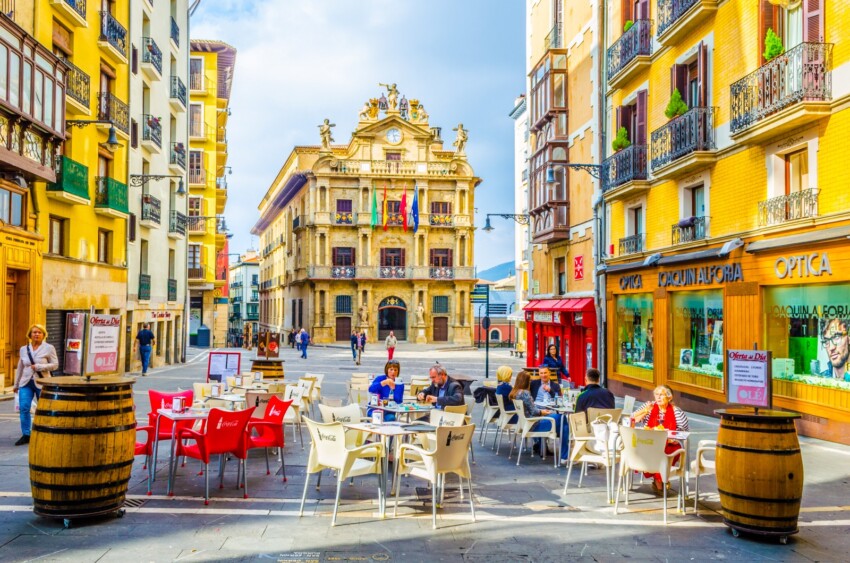

Pamplona is the city of opposing extremes: crowds of people, rivers of alcohol and madness during the week of San Fermin, a peaceful and sly atmosphere of yesteryear throughout the rest of the year.
The capital of Navarre, a proud region of northern Spain, is an inland city nestled in the fertile plain of the Arga river. Of Roman origin, it is rich in history and proudly attached to its traditions.
One of Spain’s cities with the highest quality of life, for more than eleven months of the year Pamplona is a charming city to visit to be enchanted by romantic views without crowds of tourists, to taste the delicious specialities of the local cuisine and to spend a cheerful evening in one of the traditional bars de pintxos (the Basque equivalent of tapas) in the old town. It is also one of the most impressive stops on the famous Camino de Santiago.
In a single week in July, Pamplona is transformed into one of the most delirious cities in Europe during a traditional festival that has become one of the most famous festivals in the world, that of San Fermín .
Hordes of reckless tourists from all over the world join the local young and old in a race through the streets of the city chased by wild bulls. A madness worth seeing at least once in a lifetime… preferably from the safety of a window or balcony, and then to join in the mad celebrations when the bulls have returned to their pens.
Pamplona is a city that surprises visitors with its rich historical heritage and deep-rooted traditions. The perfectly preserved historical centre is home to some of the most significant attractions, while the modern districts offer interesting examples of contemporary architecture and green spaces. The city lends itself perfectly to being explored on foot, allowing you to discover hidden nooks and crannies and suggestive views.
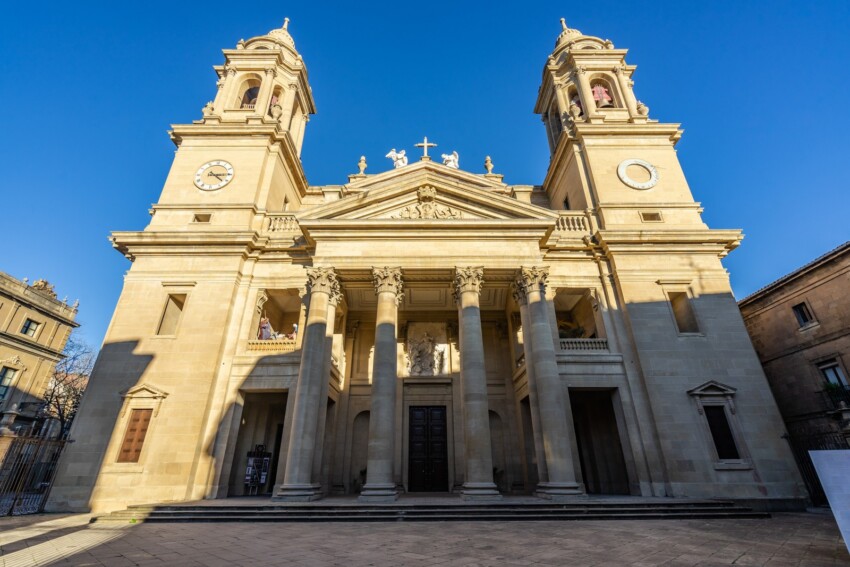
The Gothic Cathedral of Santa María la Real represents one of Pamplona’s most precious architectural jewels. Built between the 14th and 15th centuries, this magnificent building combines Gothic elements with an imposing neoclassical façade added in the 18th century.
The cathedral’s Gothic cloister is considered one of the most beautiful in Europe, with its elaborate sculptures and finely decorated capitals telling biblical stories and scenes from medieval daily life. Inside, the diocesan museum houses a remarkable collection of sacred art, including a valuable silver Virgin from the 14th century.
A visit to the cathedral also allows you to admire the tomb of Charles III the Noble and his consort Eleanor, a masterpiece of Gothic funerary art made of alabaster.
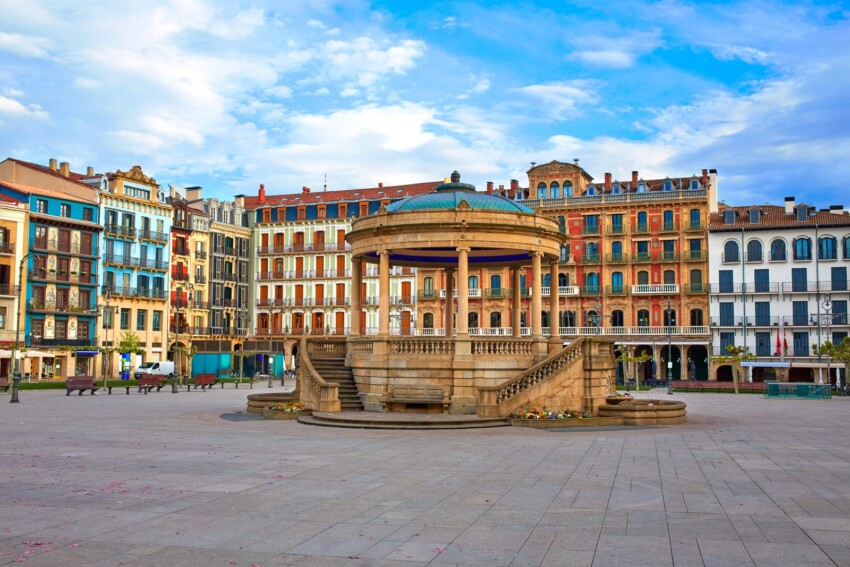
Plaza del Castillo is the beating heart of Pamplona and the centre of the city’s social life. This elegant arcaded square, built on the site of the old medieval castle, is surrounded by historical buildings and characteristic cafés.
Café Iruña, opened in 1888, is one of the most famous historical cafés, also frequented by Ernest Hemingway during his stays in Pamplona. The interior still conserves the atmosphere of the Belle Époque, with mirrors, carved wood and original decoration.
The square becomes particularly lively during the Sanfermines, when it turns into one of the main meeting points for celebrations. Throughout the year, it is the ideal place to sip a coffee or a txakolí (white Basque wine) while watching the passers-by go by.
The walls of Pamplona constitute one of the best-preserved Renaissance defence systems in Europe. The route along the fortifications, which stretches almost 5 kilometres, offers splendid views of the city and its surroundings.
The Bastion of Labrit and the Bastion of Redín are among the most striking points of the route, offering breathtaking views of the Arga valley. The Media Luna Park, integrated into the defensive system, is a beautiful romantic garden where you can relax and enjoy panoramic views.
The pentagonal Citadel, built at the end of the 16th century, is an outstanding example of Renaissance military architecture. Today, it houses exhibition spaces and green areas popular with residents.
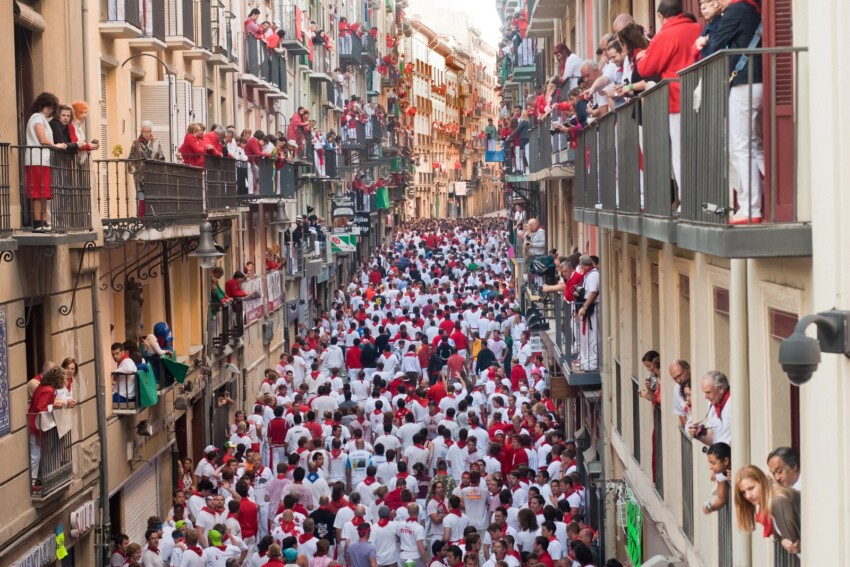
Calle de la Estafeta is the most famous street in Pamplona, known throughout the world for being part of the bull running route during the Sanfermines. This cobbled street, which connects Plaza del Castillo with the Plaza de Toros, is the gastronomic heart of the city.
The numerous pintxos bars that line the street offer some of the best expressions of Basque-Navarrena cuisine. Here you can taste local specialities such as txistorra (typical sausage) and a wide variety of creative pintxos.
The street retains its traditional character, with historic shops and period signs contributing to its unique atmosphere. During the evening, it becomes one of the focal points of Pamplona’s nightlife.
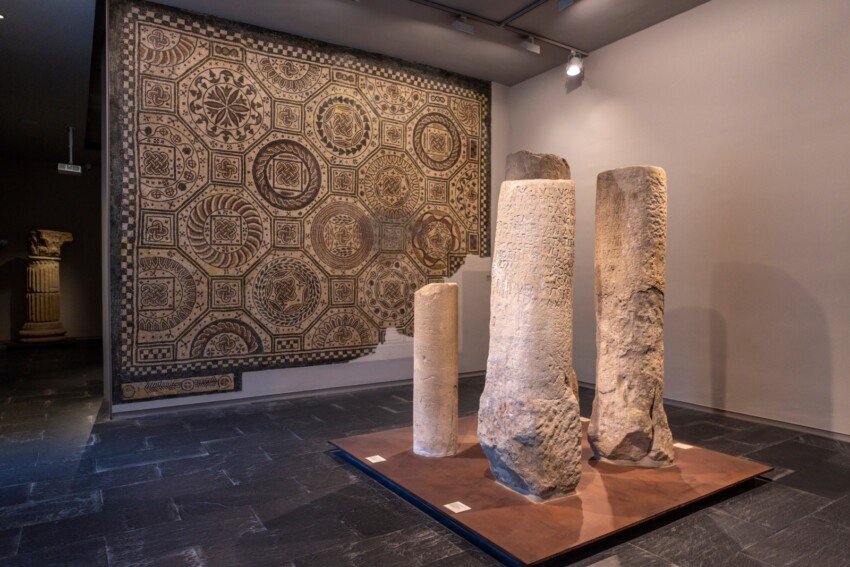
The Museum of Navarre, housed in an old 16th-century hospital, holds the most important art collection in the region. The museum traces the history of Navarre from prehistory to the 20th century through a rich collection of archaeological remains and works of art.
Among the most valuable pieces are the Romanesque capitals from the Romanesque cathedral of Pamplona, the Roman mosaic of the Muses of Arellano and the portrait of the Marquis of San Adrián painted by Goya.
The medieval collections are particularly significant, with valuable examples of Romanesque and Gothic art that testify to the importance of Navarre as an independent kingdom in the Middle Ages.
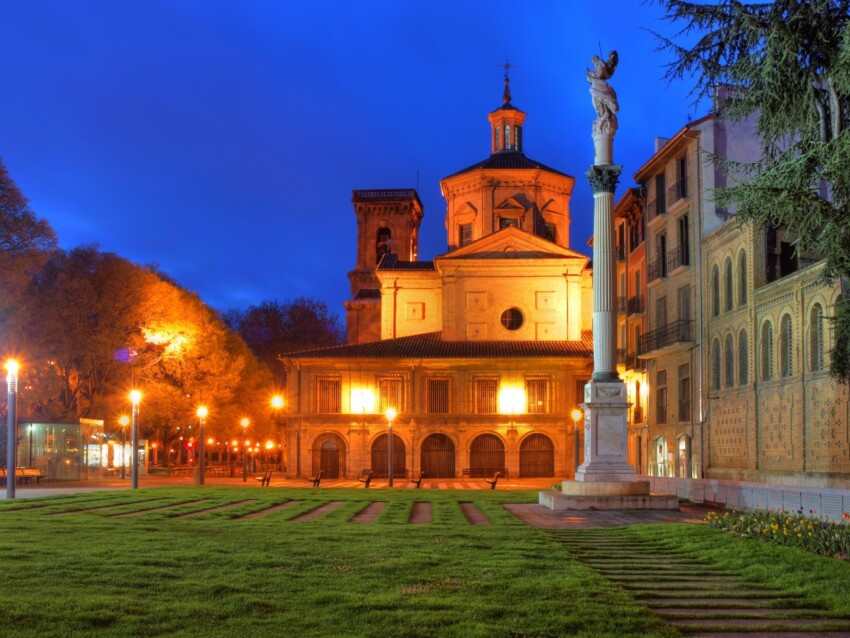
The Church of San Lorenzo is of particular importance to the people of Pamplona as it houses the chapel of San Fermín, the city’s patron saint. The building, of medieval origin but remodelled in the 18th century, combines Gothic and Baroque elements.
The Chapel of San Fermín is a jewel of Spanish Baroque, richly decorated with marble and gilding. The statue of the saint, an object of great devotion, is carried in procession during the Sanfermines.
The temple is also known for its bell tower, one of the landmarks of Pamplona’s urban profile, and for its central role in the San Fermin celebrations.
Pamplona’s Plaza de Toros Monumental, built in 1922, is one of the city’s most emblematic buildings. During the Sanfermines it becomes the end point of the bull run and the centre of the traditional bullfights.
The bullring, which can accommodate almost 20,000 spectators, is one of the largest in Spain. The Taurino Museum, located inside the plaza, tells the history of bullfighting in Pamplona and the evolution of the Sanfermines.
During the rest of the year, the plaza hosts cultural events and concerts, confirming its role as an important cultural centre of the city.
The Taconera Park is the oldest and most charming public garden in Pamplona. Created in the 18th century, this historical green space combines elements of the French garden with romantic touches of the 19th century. The park is famous for its inhabited moats where deer, peacocks, ducks and other animals live freely.
The formal gardens are embellished with statues, fountains and rose-covered pergolas. The park is also home to Café Vienés, an elegant modernist-style café where you can enjoy traditional hot chocolate with churros. The ancient walls surrounding the park offer splendid views of the old city.
The Palace of Navarre, the current seat of the regional government, is one of the city’s most representative Baroque buildings. Built in the 18th century as the residence of the viceroys, the palace is notable for its imposing Baroque façade and its fine portal decorated with the coat of arms of the Kingdom of Navarre.
The interior, which can be visited by appointment, conserves precious Flemish tapestries, period furniture and a remarkable collection of art. The Throne Room, with its mirrors and gilded stucco, is a magnificent example of the Spanish Rococo style. The palace gardens, designed in the French style, are an oasis of peace in the heart of the city.
In the following map you can see the location of the main places of interest mentioned in this article.
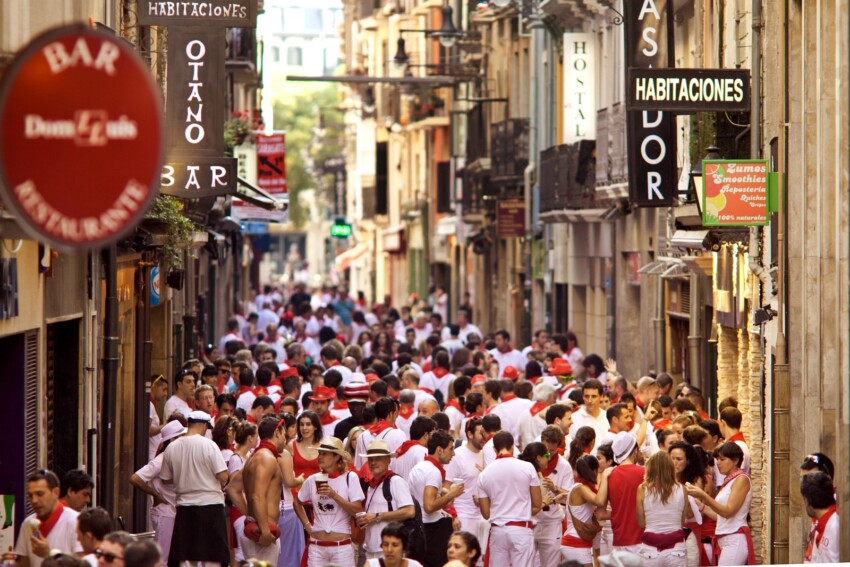
The Fiesta de San Fermín is an event that completely transforms the city of Pamplona: a continuous fiesta, lasting day and night for nine days.
The most famous image of San Fermin week is the running of the bulls (called encierro), during which the city’s inhabitants, traditionally dressed in white, and the more adventurous tourists run in front of a group of bulls set loose along a route that crosses the city centre and ends in the bullfighting arena.
It is a short course, less than 900 metres, and the race lasts only three minutes, but the constant risk of the bulls running makes it intense and adrenalin-pumping. For some it is simply madness, and animal rights activists are strongly opposed to this tradition that ends with the slaughter of the bulls, but it is undeniable that it is a unique atmosphere, a kind of orgiastic celebration of life.
To put it at risk in order to appreciate its value, this was somewhat the original meaning of the fiesta, summed up in the emotional moment of the litany that the runners sing at San Fermin before the start of the race.
Today, this sacred sense is unfortunately distorted by many tourists, especially young people, who join the runners in the bull run simply to show off. Who knows what Hemingway, who celebrated this tradition in his novel ‘Fiesta‘ and made it an international tourist attraction, would think of it?
Fortunately, it is still possible to enjoy the extraordinary festive atmosphere that pervades the city in an authentic way, avoiding joining the race and watching from safe places.
Follow the other events of the fiesta, such as the children’s parades, concerts, dance shows and bullfights, and don’t miss the final appointment at midnight on 14 July, with the singing of the ‘Pobre de mí’ by candlelight.
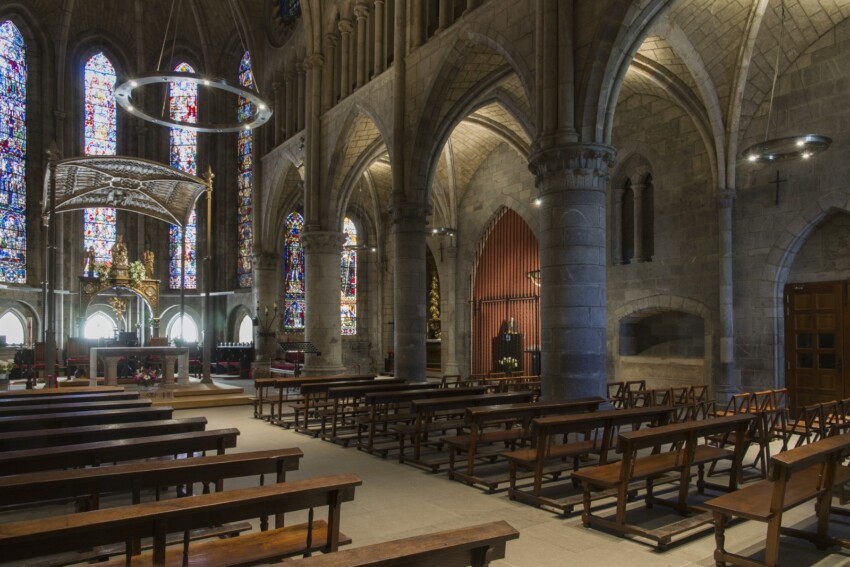
Pamplona’s privileged location makes it an ideal starting point for exploring the beauty of Navarre. Hiring a car is recommended to easily reach the numerous attractions in the surrounding area, many of which are not easily accessible by public transport.
The Castle of Olite, just a 45-minute drive from Pamplona, is one of the most spectacular medieval castles in Spain. Former residence of the kings of Navarre, this Gothic palace-fortress is an outstanding example of medieval architecture, with its high towers, hanging gardens and elaborate decoration. The surrounding medieval village, with its cobbled streets and historic cellars, is well worth a visit.
The Monastery of Leyre, located about an hour from Pamplona, is one of the most important religious monuments in Navarre. This monastic complex, which combines Romanesque and Gothic elements, offers spectacular views of the Sierra de Leyre and the Yesa reservoir. Visitors can participate in the Gregorian chanting of the Benedictine monks and visit the Romanesque crypt, considered one of the jewels of Spanish medieval architecture.
Roncesvalles (Orreaga in Basque) is about a 45-minute drive from Pamplona and is a place of extraordinary historical and cultural importance. This small Pyrenean village is famous for being the first Spanish stopping point of the French Way of St James and for its Collegiate Church of Santa María, an important monastic complex from the 13th century. The place is also known for the historic Battle of Roncesvalles in 778, celebrated in the ‘Chanson de Roland’.
During the week of San Fermin, hotels and B&Bs in Pamplona sell out every year despite sky-high prices. If you want to participate in one of the most famous fiestas in the world, you should book several months in advance.
During the rest of the year, finding a hotel in Pamplona will not be difficult, and indeed you will have a wide choice of establishments with good value for money.
The Casco Antiguo (old town) is the ideal area for those who want to experience the essence of Pamplona. Here you will find numerous boutique hotels in historic buildings and you are within walking distance of the main attractions, the best restaurants and the lively nightlife. TheEnsanche district offers quieter and more modern accommodation, ideal for families and business travellers. The area is well connected to the city centre but offers a more relaxed atmosphere and generally lower prices. Many international chain hotels and tourist flats can be found here.
Pamplona has an international airport, but is not connected by direct flights. You can arrive in Madrid and from there take a domestic flight or land in Bilbao and then travel by rental car or train.
If you are already in Spain, you can reach Pamplona by direct trains and buses from all major locations in northern Spain and from the most important Spanish cities. The train journey from Madrid takes about three hours, one more if you travel from Barcelona.
What's the weather at Pamplona? Below are the temperatures and the weather forecast at Pamplona for the next few days.